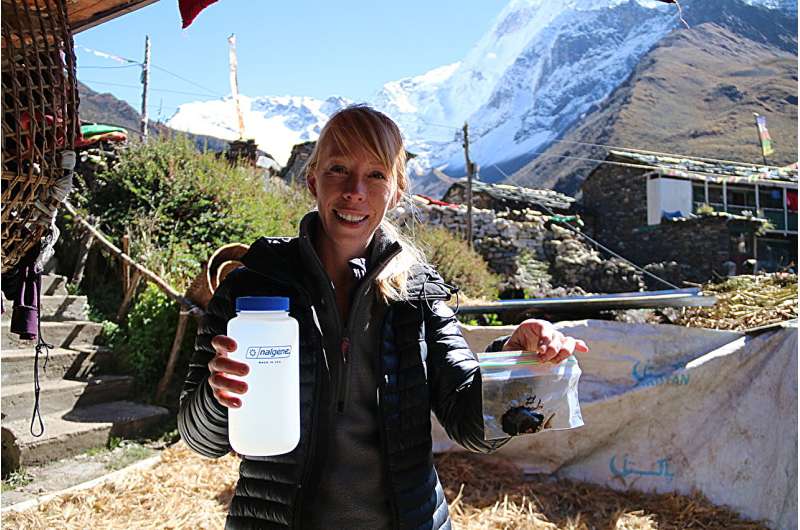This article has been reviewed according to Science X's editorial process and policies. Editors have highlighted the following attributes while ensuring the content's credibility:
fact-checked
proofread
Scientists discover 18 new species of gut microbes in search for origins of antibiotic resistance

In a paper published February 28 in Proceedings of the National Academy of Sciences (PNAS), a research team describes the discovery of 18 never-before-seen species of bacteria of the Enterococcus type that contain hundreds of new genes—findings that may offer new clues into antibiotic resistance as scientists hunt for ways to curb these infections.
Enterococci are leading causes of multidrug resistant infections, particularly following surgery and in hospitalized patients. The infections can be lethal and contribute to more than $30 billion annually in added health care costs.
"Over the past 75 years, antibiotics have saved hundreds of millions of lives and have contributed greatly to the success of all types of surgery," said Michael S. Gilmore, Ph.D., Chief Scientific Officer at Mass Eye and Ear, who co-lead the research team and is also director of the Infectious Disease Institute at Harvard Medical School.
"Over the past 30 years, however, many of the most problematic bacteria have become increasingly resistant to antibiotics and this is now reaching crisis proportions. Our findings may improve understanding of how resistance genes spread to hospital bacteria and threaten human health."
Discovered in the 1920s, antibiotics like penicillin are compounds naturally produced by microbes in the soil. Gilmore notes that antibiotic-producing microbes thrive in rotting leaves and plant matter on the forest floor and give forest soil its smell.
Gilmore and Ashlee Earl, Ph.D., director of the Bacterial Genomics Group at Broad, assembled an international team of scientists, including elite adventurers, to scour remote corners of the globe for scat, soil and other samples that would likely contain bacteria of the Enterococcus type.
The diversity of specimens they collected spanned samples from penguins migrating through sub-Antarctic waters, duiker and elephants from Uganda; insects, bivalves, sea turtles, and wild turkeys from Brazil to the United States; kestrel and vultures from Mongolia; wallaby, swans, and wombats from Australia; and zoo animals and wild birds from Europe.
The team's collection efforts had previously led to the discovery of new classes of bacterial toxins and showed that Enterococcus bacteria arose about 425 million years ago when the first animals, ancestors of millipedes and worms, came onto land. They likely dominated the planet for about 50 million years before four-legged animals came ashore.
Their most recent collections expanded genus diversity of enterococcal strains by more than 25% and in doing so, uncovered more clues, revealing that insects and other invertebrates are likely by far the greatest natural source for enterococci bacteria, including species that are naturally antibiotic resistant.
"Until recently, most of what we've understood about the genetics of enterococcus come from those that make us sick, and that's a problem—like trying to understand darkness without ever seeing the light," said Earl.
"Expanding our view to include those from outside of hospitals, with the help of citizen scientists, gave us the contrast we needed to identify how they make people sick in the hospital, and also gives the public the chance to co-own solutions."
Gilmore posits that insects have been eating the rotting plant material, and naturally giving themselves a dose of the antibiotics in the process. He hypothesizes that for hundreds of millions of years, bacteria in the guts of these insects like Enterococcus have been exposed to those antibiotics and have become resistant. In the 1940s and '50s, when humans first began taking antibiotics, the resistances were already in the environment and worked their way into the bacteria that cause human infection.
"The COVID-19 pandemic revealed that nature contains many infectious risks for humans," said Gilmore. "This study shows that insects and their relatives in nature are a large and uncharacterized reservoir of undiscovered genes in microbes closely related to those that cause some of the most antibiotic resistant infections."
More information: Julia A. Schwartzman et al, Global diversity of enterococci and description of 18 previously unknown species, Proceedings of the National Academy of Sciences (2024). DOI: 10.1073/pnas.2310852121
Provided by Mass Eye and Ear





















